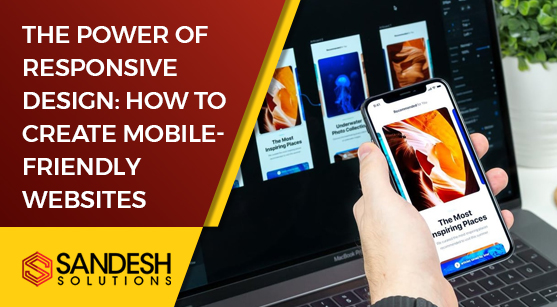In the ever-evolving digital landscape, the importance of a mobile-friendly website cannot be overstated. As the usage of smartphones and tablets continues to soar, users now demand flawless experiences regardless of the device they use. Responsive design emerges as the ultimate solution, enabling websites to dynamically adjust to diverse screen sizes and deliver exceptional user experiences. This blog post by a leading website development company in Dubai delves into the transformative potential of responsive design, unraveling the essential steps to creating mobile-friendly websites.
Understanding the Essence of Responsive Design:
The responsive design represents a revolutionary approach to web development, striving to ensure optimal viewing experiences across all devices. By leveraging fluid grids, adaptable images, and CSS media queries, responsive design empowers websites to automatically adapt to various screen resolutions, sizes, and orientations. Through this adaptable framework, content and layout seamlessly conform to the unique characteristics of each user’s device.
Prioritizing the Mobile User Experience:
The mobile user experience stands as a linchpin for engaging visitors and driving conversions. Mobile-friendly websites excel in providing improved navigation, legibility, and usability on smaller screens. Gone are the days of zooming and horizontal scrolling; instead, users relish effortless and intuitive browsing encounters. By placing mobile user experience at the forefront, businesses can elevate customer satisfaction and amplify mobile conversions.
Crafting Responsive Layouts:
At the heart of mobile-friendly web design lies the art of creating responsive layouts. This art encompasses the design of flexible grids and the skillful application of CSS techniques that enable seamless adjustment and resizing of elements according to screen size. Responsive layouts ensure that content remains accessible, readable, and visually captivating across devices. This adaptability empowers users to navigate and interact effortlessly with websites, regardless of the device they wield.
Navigating the Mobile Landscape:
Efficient and intuitive navigation is pivotal for mobile-friendly websites. A mobile-friendly navigation system necessitates simplifying menu structures, employing the popular hamburger menu, and incorporating touch-friendly elements. By embracing mobile-friendly navigation, businesses facilitate users’ easy access to different pages and foster frictionless website exploration, thus enhancing the overall browsing experience.
Optimizing Speed and Performance:
Mobile users treasure swift and responsive encounters. Hence, optimizing website speed and performance becomes imperative in mobile-friendly design. This entails optimizing images, streamlining code, harnessing caching methodologies, and leveraging content delivery networks (CDNs). By minimizing page load times, businesses enhance user satisfaction, mitigate bounce rates, and bolster conversions.
Conclusion:
In today’s era dominated by mobile devices, responsive design emerges as an irreplaceable facet of successful web development. Understanding the principles of responsive design and implementing best practices allow businesses to seamlessly cater to users across various devices. For comprehensive website services in Dubai, including professional web development services, turn to our reputable company. Embrace the power of responsive design and equip your business with the ability to captivate and engage a broader audience on mobile platforms.


